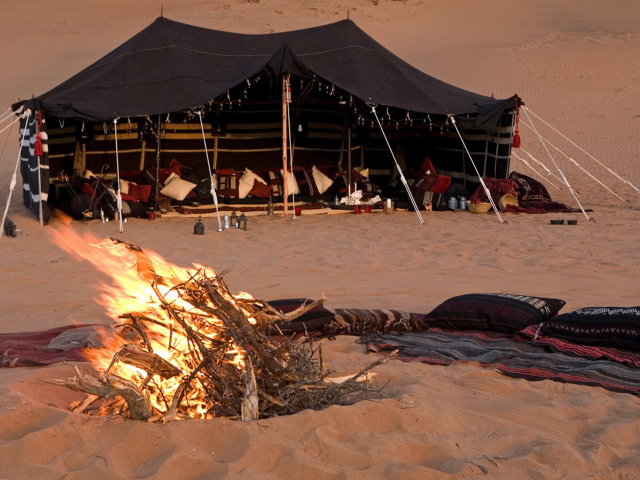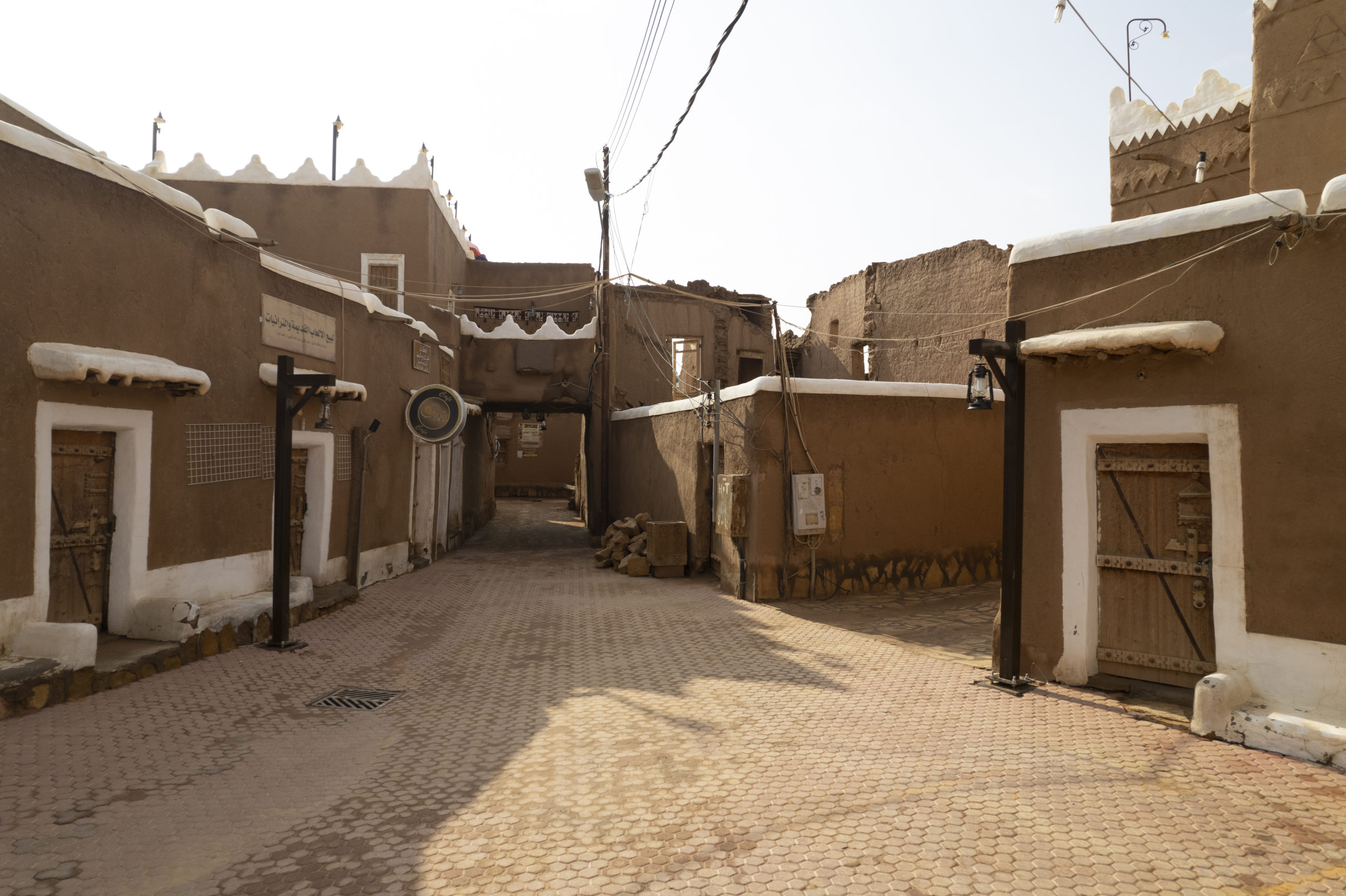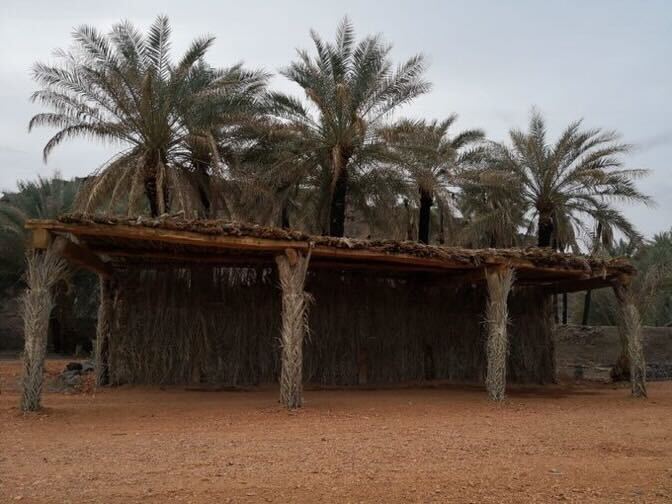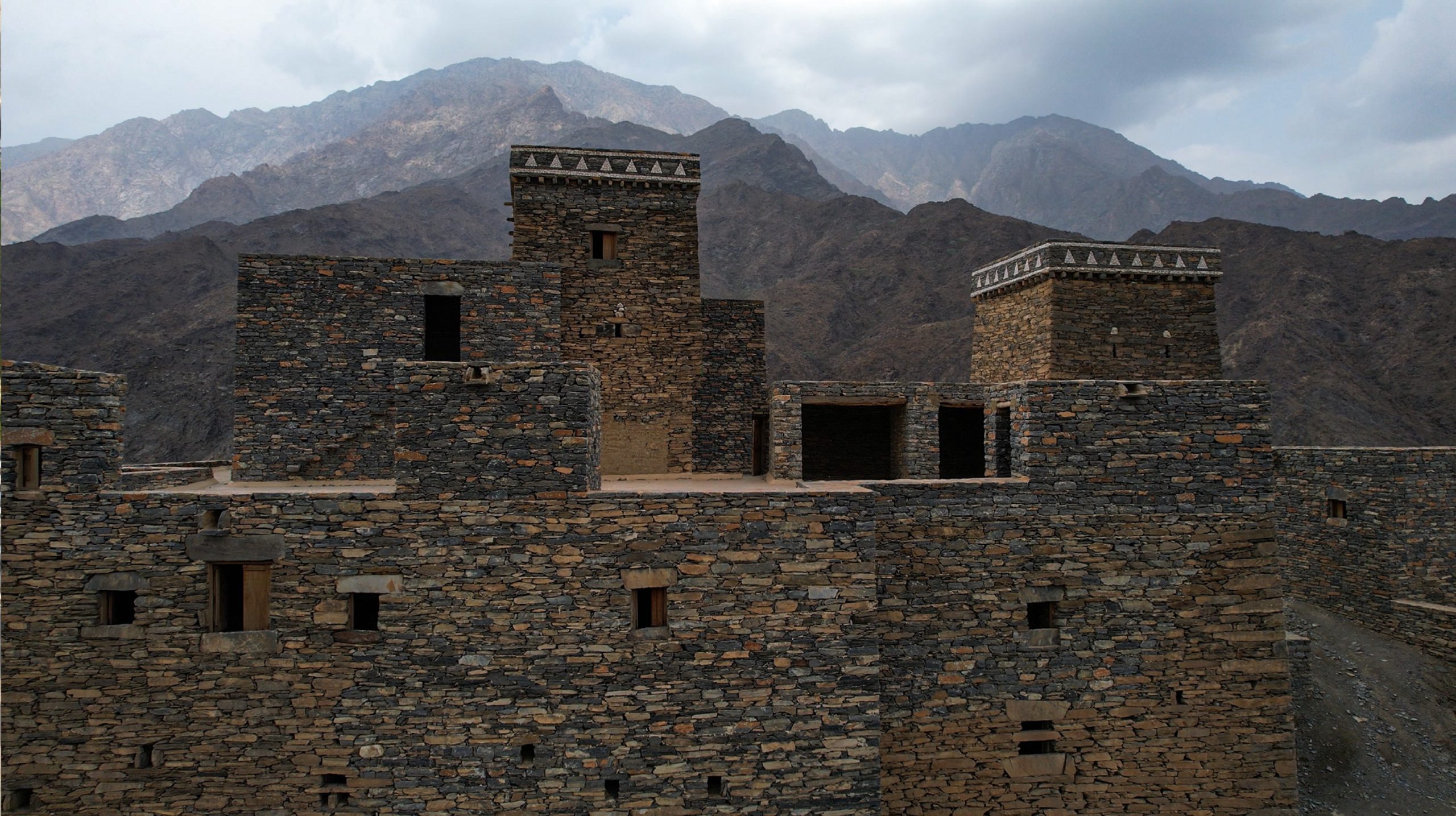Have you ever wondered how traditional houses in Saudi Arabia were built before the modern era? These homes are more than mere shelters—they are architectural masterpieces that reflect the geographical and cultural diversity of the Kingdom. From goat-hair tents in the deserts to stone houses in the mountains, each style tells a unique story worth exploring.
Types of Traditional Houses in Saudi Arabia
1. Bedouin Tents (Bayt Al Sha’ar) | Early Traditional Houses in the Desert
Among the most iconic traditional homes in desert areas, Bedouin tents are made from goat hair and sheep wool. They are easy to transport, making them ideal for a nomadic lifestyle, and are often used as guest reception areas. These tents offer excellent protection against the sun’s heat and winter’s chill.

Bedouin tents are among the most famous traditional desert homes in Saudi Arabia – Aqar App
2. Mud Houses | Classic Traditional Homes in Central Saudi Arabia
Common in central and northern regions of the Kingdom, these houses boast significant environmental benefits: they remain cool during the summer and warm in the winter. Constructed using mud, adobe bricks, and farm silt, these traditional mud houses are still preserved today as cultural and tourist landmarks, like At Turif in Diriyah.

Mud houses are among the oldest traditional homes in Najd and Hejaz – Aqar App
3. Palm Frond Huts (Arish Houses) | Coastal Traditional Houses Made of Palm
Constructed from palm fronds and trunks, these houses are prevalent in coastal regions like the Eastern Province. They provide ample shade during hot summers and are among the simplest forms of traditional housing, often decorated with woven mats and palm fibers.

Arish houses are an architectural heritage made from palm fronds – Aqar App
4. Stone Houses | Traditional Mountain Homes in Southern Saudi Arabia
Found in mountainous areas in the south, such as Asir and Al Baha, these homes are known for their durability. Made from solid stone, they can withstand the harsh mountainous climate. The most well-known example is the village of Dhee Ain.

Stone houses in Dhee Ain village are among the most prestigious traditional homes – Aqar App
Traditional Homes and Saudi Identity
Traditional homes are closely tied to the cultural and social heritage of Saudi society. They were designed based on necessity, available resources, and the surrounding environment. Preserving these homes today forms part of the Kingdom’s strategy to enhance cultural tourism under the Saudi Vision 2030.
Frequently Asked Questions
- What are traditional houses?
Traditional houses are residences built from local materials such as mud, stone, and palm fronds, reflecting the architectural heritage of Saudi regions. - What is the difference between a Bedouin tent and a mud house?
A Bedouin tent is portable and used in desert areas, while a mud house is fixed and typically found in villages and towns. - Are there still people living in traditional houses?
Yes, some traditional houses are still inhabited, especially in rural areas. Others have been transformed into museums or heritage sites. - Do traditional house designs vary by region?
Absolutely. The materials and designs differ depending on the geographic location and climate (mountains, desert, coast). - Which traditional houses are popular tourist attractions?
Notable examples include Nassif House in Jeddah, Rijal Almaa Village, Dhee Ain Village, and the mud villages of Al-Ahsa.
Conclusion
Discussing traditional houses means discussing history, identity, and cultural diversity. Each region in Saudi Arabia has left its unique architectural imprint—from the southern mountains to the northern deserts and eastern coasts. These homes are not relics of the past but living heritage that expresses the authenticity of the Saudi people and their deep-rooted connection to the land.
To stay updated with the latest articles, visit the Aqar Blog for insights into the real estate world and urban heritage in Saudi Arabia.




